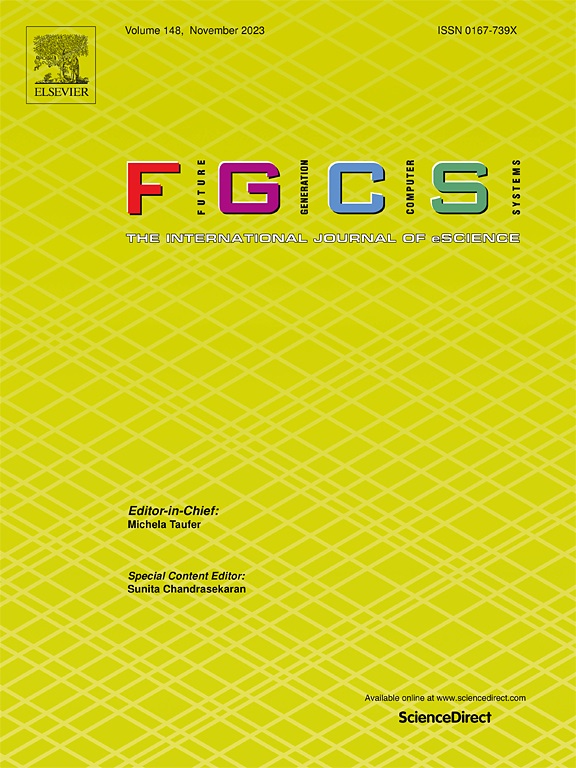Causal invariant geographic network representations with feature and structural distribution shifts
IF 6.2
2区 计算机科学
Q1 COMPUTER SCIENCE, THEORY & METHODS
Future Generation Computer Systems-The International Journal of Escience
Pub Date : 2025-03-20
DOI:10.1016/j.future.2025.107814
引用次数: 0
Abstract
Relationships between geographic entities, including human-land and human-people relationships, can be naturally modelled by graph structures, and geographic network representation is an important theoretical issue. The existing methods learn geographic network representations through deep graph neural networks (GNNs) based on the i.i.d. assumption. However, the spatial heterogeneity and temporal dynamics of geographic data make the out-of-distribution (OOD) generalisation problem particularly salient. We classify geographic network representations into invariant representations that always stabilise the predicted labels under distribution shifts and background representations that vary with different distributions. The latter are particularly sensitive to distribution shifts (feature and structural shifts) between testing and training data and are the main causes of the out-of-distribution generalisation (OOD) problem. Spurious correlations are present between invariant and background representations due to selection biases/environmental effects, resulting in the model extremes being more likely to learn background representations. The existing approaches focus on background representation changes that are determined by shifts in the feature distributions of nodes in the training and test data while ignoring changes in the proportional distributions of heterogeneous and homogeneous neighbour nodes, which we refer to as structural distribution shifts. We propose a feature-structure mixed invariant representation learning (FSM-IRL) model that accounts for both feature distribution shifts and structural distribution shifts. To address structural distribution shifts, we introduce a sampling method based on causal attention, encouraging the model to identify nodes possessing strong causal relationships with labels or nodes that are more similar to the target node. This approach significantly enhances the invariance of the representations between the source and target domains while reducing the dependence on background representations that arise by chance or in specific patterns. Inspired by the Hilbert–Schmidt independence criterion, we implement a reweighting strategy to maximise the orthogonality of the node representations, thereby mitigating the spurious correlations among the node representations and suppressing the learning of background representations. In addition, we construct an educational-level geographic network dataset under out-of-distribution (OOD) conditions. Our experiments demonstrate that FSM-IRL exhibits strong learning capabilities on both geographic and social network datasets in OOD scenarios.
具有特征和结构分布变化的因果不变地理网络表示
地理实体之间的关系,包括人地关系和人际关系,可以自然地用图结构建模,地理网络表示是一个重要的理论问题。现有方法通过基于 i.i.d. 假设的深度图神经网络(GNN)来学习地理网络表征。然而,地理数据的空间异质性和时间动态性使得分布外泛化(OOD)问题尤为突出。我们将地理网络表征分为不变表征和背景表征,前者能在分布变化的情况下始终稳定预测标签,后者则随不同的分布而变化。后者对测试数据和训练数据之间的分布变化(特征和结构变化)特别敏感,是造成分布外泛化(OOD)问题的主要原因。由于选择偏差/环境影响,不变表征和背景表征之间存在虚假相关性,导致模型极端值更有可能学习到背景表征。现有方法关注的是由训练数据和测试数据中节点特征分布变化决定的背景表征变化,而忽略了异质和同质邻近节点比例分布的变化,我们将其称为结构分布变化。我们提出了一种特征-结构混合不变表示学习(FSM-IRL)模型,该模型同时考虑了特征分布偏移和结构分布偏移。为了解决结构分布偏移问题,我们引入了一种基于因果关注的采样方法,鼓励模型识别与标签或与目标节点更相似的节点之间具有较强因果关系的节点。这种方法大大增强了源域和目标域之间表征的不变性,同时减少了对偶然或特定模式下产生的背景表征的依赖。受希尔伯特-施密特(Hilbert-Schmidt)独立性准则的启发,我们实施了一种重新加权策略,以最大限度地提高节点表征的正交性,从而减轻节点表征之间的虚假相关性,抑制背景表征的学习。此外,我们还构建了一个非分布(OOD)条件下的教育级地理网络数据集。我们的实验证明,在 OOD 情景下,FSM-IRL 在地理和社交网络数据集上都表现出很强的学习能力。
本文章由计算机程序翻译,如有差异,请以英文原文为准。
求助全文
约1分钟内获得全文
求助全文
来源期刊
CiteScore
19.90
自引率
2.70%
发文量
376
审稿时长
10.6 months
期刊介绍:
Computing infrastructures and systems are constantly evolving, resulting in increasingly complex and collaborative scientific applications. To cope with these advancements, there is a growing need for collaborative tools that can effectively map, control, and execute these applications.
Furthermore, with the explosion of Big Data, there is a requirement for innovative methods and infrastructures to collect, analyze, and derive meaningful insights from the vast amount of data generated. This necessitates the integration of computational and storage capabilities, databases, sensors, and human collaboration.
Future Generation Computer Systems aims to pioneer advancements in distributed systems, collaborative environments, high-performance computing, and Big Data analytics. It strives to stay at the forefront of developments in grids, clouds, and the Internet of Things (IoT) to effectively address the challenges posed by these wide-area, fully distributed sensing and computing systems.

 求助内容:
求助内容: 应助结果提醒方式:
应助结果提醒方式:


